Chemical peels have been in use since the days of antiquity, and many different formulations exist to achieve the goal of rejuvenating the skin by means of triggering the skin’s natural peeling mechanism.
Chemical peels work by means of triggering the body’s natural reaction to a surface agitant similar to the way the skin peels following a sunburn. Most chemical peels use an acidic substance to gently remove the skin’s outermost layer, revealing a fresh new layer of glowing new skin beneath.
While most peels are designed for use on the face, you can also use chemical peels on different areas of the body, including the neck, chest, shoulders, back, buttocks, thighs, and hands. Today, chemical peels are just one more option for rejuvenating the skin by removing dead skin cells, surface impurities and accumulated debris, and triggering collagen production to expose a fresh, new layer of renewed skin cells.
For people who regularly get chemical peels, the intensity of each peel may be increased gradually over time, producing an increased tolerance to the effect of chemical peels, and gradually decreasing downtime with each peel. There are many types of chemical peels, but most fall into one of three basic categories:
These are the type of peels that people often refer to as “lunchtime peels” and are the mildest type of chemical peel available. This type of peel lifts off only the outermost surface layer of skin, and you may experience redness or slight tenderness to the touch for about 20 to 30 minutes after the treatment. Over the course of the next few days, you may experience some mild flaking and peeling, but for the most part, the effects of these peels are not particularly dramatic.
The results can be impressive at producing improved surface tone and texture, a reduction in fine lines and wrinkles, and some reduction in pore size and brown spots. For deeper rejuvenation, however, you’d have to go with a more intense type of chemical peel.
These peels are the next level up after a light or superficial peel, and generally contain trichloroacetic acid at concentrations of 35 percent or less. Medium-depth peels are effective at treating sun damage, sunspots, mild to moderate acne scars, fine lines and wrinkles, and lax skin and/or dark circles under the eyes.
Following the application of the acid, the peeling process can take anywhere from five to seven days. During this period, the skin peels similarly to the way it peels after a sunburn. The fresh new skin beneath the surface is raw and red and very vulnerable, requiring constant hydration with ointment and total protection from sun exposure, which means you may need to stay indoors for a few days during the recovery period.
These deeper peels are used to treat more pronounced and stubborn issues such as severe acne scars, deeper lines, and wrinkles, excessive sun damage, or laxity of the skin. These peels also contain trichloroacetic acid solutions, but in this case, they contain concentrations ranging from 50 to 70 percent, and in some cases, they may contain phenol acid. Deeper peels may not be recommended for Atlanta chemical peels patients with darker skin tones, as they could produce scarring or uneven pigmentation in such patients.
Downtime following a deep peel may range from one to two weeks, with an average period of about 10 days. During this time, peeling is intensive and the raw, pink skin beneath the surface must be protected from sun exposure as well as kept hydrated at all times. You will probably have to spend most of the recovery period indoors, but it will be worth the sacrifice once you heal from the peel and expose that lovely layer of glowing, fresh new skin.






Before your chemical peel is applied, our specialist will cleanse your skin to remove makeup, cosmetics, and oil, as these surface deposits may act as a barrier that prevents the acid from properly penetrating the skin.
An ointment is applied to the skin around delicate areas such as the eyes, nose, and mouth, to avoid pooling of the acid in those areas. A lip ointment will also be applied to protect the mouth and lips. Following this, the acid is applied gently to the entire face.
The length of time that the acid is left on the skin will depend on the strength and type of peel being applied. If it’s a mild surface peel, the acid will neutralize itself over a period of time, and the patient will be able to simply wash the chemical peel off their skin. In the case of stronger peels, a neutralizing agent is required in order to stop the acid from working after a certain period of time.
The peel works by triggering a chemical reaction in the skin that gently dissolves the outermost layer of dead skin cells. This helps to even out the tone and texture of the skin, and promote increased production of collagen, which builds plump, voluminous skin cells and healthy, glowing skin.
At Nip & Tuck Plastic Surgery we strive to deliver the best chemical peels Atlanta has to offer. As a licensed, double board-certified plastic surgeon with expertise in the area of cosmetic procedures and years of experience, Dr. Nicholas Jones, MD, FACS can help you to decide if Chemical Peel is the right choice for you. If you’d like to learn more about how a chemical peel may help you rejuvenate the surface of your skin, call us today at (404) 777-TUCK to schedule your consultation with Dr. Nicholas Jones and start your journey to a more youthful appearance.
Come visit Dr. Jones and our team and let us help you achieve the spectacular look you deserve!
3280 Howell Mill Rd NW, Suite 200, Atlanta, GA 30327




